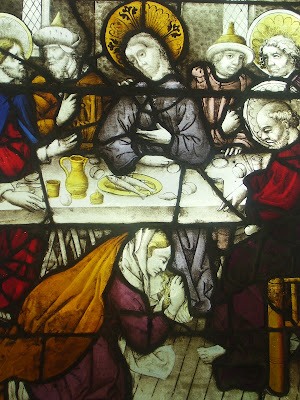Monday, 1 October 2012
The absence of elephants
The demography of our congregations is such that the presence of those who were formed as present and future members of the Church of England in the 1920s, 30s, 40s and 50s has masked the startlingly smaller number so formed in the 1960s, 70s, 80s and 90s, but as they begin to die the huge gap is exposed.
This is something I’ve posted twice before. I’ve now been trying to do some work to get my brain clear for the next meeting of the deanery Mission Area Planning Group, and what I’ve found myself typing is that, despite our doing what we thought were all the right things in the parish over twenty years, the elephants born in 1960s onwards are simply not in the room.
An article in the Church Times last week picked up the radically different level of charitable giving by those born during and between the two World Wars (exactly those who were teenagers in the 1920s, 30s, 40s and 50s) compared especially with those born since 1966 (the oldest of whom became teenagers when the Thatcher Government began - exactly those we hardly ever recruit); it compared more than simply the social cohesion of the first with the individualism of the second.
Earlier in the month it had carried another article which described huge church growth in England in the last few years but admitted that areas with static or shrinking populations, little ethnic diversity, and low economic dynamism have tended to see less church growth... (which) suggests we need to be realistic about those contexts which are toughest; it is harder to grow a church in Middlesborough than Middlesex.
Meanwhile, also this month, the Grimsby Telegraph reports a local rural church facing £200 000 of repairs with fifteen regular attenders who are no longer able to furnish things from Chuchwardens and PCC to engagement with the local school and so it may shut. If it does so it will not be the first, nor (given the number of churches where literally the youngest regular attender is well above retirement age) will it be the last.
These three articles caught my attention and flavour my awareness at the moment, but they don’t say anything we did not really already know: we are trying to attract later generations into a pattern of church commitment and life of an earlier generation; we are trying to do so in one of the least promising social setting in the country; and these truths are so unpalatable that we do not pay any real attention to them in our discussion or planning.
Of course there are exceptions, and a number of individuals brought into our present pattern of discipleship and organisation each year, but, nevertheless, the general points remain stubbornly true. So I wonder whether deanery planning ought now to seek someone who will specialise in helping key churches in the deanery provide something new which addresses those aged 25-55 in our community.
And whether parish planning should carve out significant time to follow up the way a previous Curate talked briefly before she left with some of those in this age group who attend our regular worship or alternative provision and with a handful of those who come to us to request Baptism and Marriage to pay much more attention to their habits and thinking before we plan anything else which is new.
Meanwhile, we enjoyed lots of the details in this Last Supper scene, which comes again from the Burrell Collection.
Subscribe to:
Post Comments (Atom)

No comments:
Post a Comment